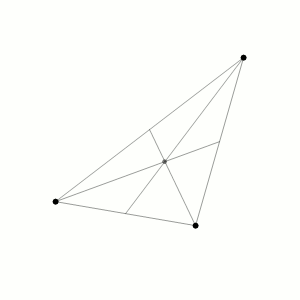
Back مسألة الأجسام الثلاثة Arabic Задача трох цел Byelorussian Задача с три тела Bulgarian Problema dels tres cossos Catalan Problém tří těles Czech Виçĕ ĕскер тĕллевчĕкĕ CV Trelegemeproblemet Danish Dreikörperproblem German Tri-korpa problemo Esperanto Problema de los tres cuerpos Spanish

In physics, specifically classical mechanics, the three-body problem is to take the initial positions and velocities (or momenta) of three point masses orbiting each other in space and then calculate their subsequent trajectories using Newton's laws of motion and Newton's law of universal gravitation.[1]
Unlike the two-body problem, the three-body problem has no general closed-form solution, meaning there is no equation that always solves it.[1] When three bodies orbit each other, the resulting dynamical system is chaotic for most initial conditions. Because there are no solvable equations for most three-body systems, the only way to predict the motions of the bodies is to estimate them using numerical methods.
The three-body problem is a special case of the n-body problem. Historically, the first specific three-body problem to receive extended study was the one involving the Earth, the Moon, and the Sun.[2] In an extended modern sense, a three-body problem is any problem in classical mechanics or quantum mechanics that models the motion of three particles.
- ^ a b Barrow-Green, June (2008). "The Three-Body Problem". In Gowers, Timothy; Barrow-Green, June; Leader, Imre (eds.). The Princeton Companion to Mathematics. Princeton University Press. pp. 726–728.
- ^ "Historical Notes: Three-Body Problem". Retrieved 19 July 2017.
© MMXXIII Rich X Search. We shall prevail. All rights reserved. Rich X Search